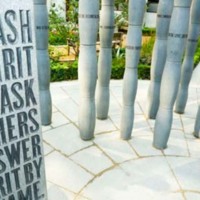
Gilt of Cain
Gilt of Cain was unveiled by the Archbishop Emeritus Desmond Tutu in Fen Court, City of London, in September 2008. The artwork, a collaboration by sculptor Michael Visocchi and poet Lemn Sissay, commemorates the abolition of the transatlantic slave trade. The granite sculpture is composed of a group of columns surrounding a podium – suggesting an ecclesiastical pulpit or slave auctioneer’s block. Extracts from Lemn Sissay’s poem, ‘Gilt of Cain’, are engraved into the granite.
Fen Court is the site of a churchyard formerly of St Gabriel’s Fenchurch St and now in the Parish of St Edmund the King and St Mary Woolnoth, Lombard St. The latter has a strong historical connection with the British abolitionist movement of the 18th and 19th centuries: Reverend John Newton, a slave-trader turned preacher and abolitionist, was rector of St Mary Woolnoth between 1780 – 1807. This project was initiated by Black British Heritage and the Parish of St Mary Woolnoth and was commissioned by the City of London Corporation in partnership with the British Land Company.

Knaresborough Festival of Entertainment and Visual Arts, 2007
Historian Audrey Dewjee gave a talk on the Yorkshire links with slavery, abolition and emancipation during Knaresborough's annual Festival of Entertainment and Visual Arts in 2007, entitled 'Merchants, Plantations and Slave Traders'.
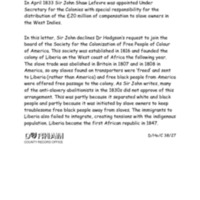
Exhibition to mark the bicentenary of the 1807 Act
Durham Record Office held an exhibition of its original documents relating to slavery, the slave trade and abolition. These include reports, maps, and a number of letters, from, for example, Sir John Shaw Lefevre (Under Secretary for the Colonies in 1833), the abolitionist James Stephen and the prominent Quaker activist Josiah Forster. The exhibition was displayed in the Record Office and toured several venues in the region. It was also used for inspiration by members of Jackass Youth Theatre, who produced the play Sharp Practice after visiting the Record Office and consulting some of the original documents on display.
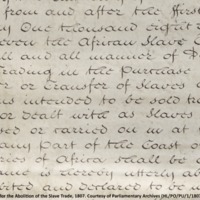
Ireland and the Slave Trade
The Ulster's People's College and the South Belfast Roundtable on Racism launched an exhibition to mark the bicentenary at a Northern Ireland Committee for Refugees and Asylum Seekers (NICRAS) conference on slavery at the Linen Hall Library in 2007. A study group of community workers from NICRAS, the Chinese Welfare Association, Black Youth Network, Donegall Pass Community Forum and the Donegall Pass Community Centre produced the exhibition which told the story of Ireland's involvement in the slave trade and its abolition. Attention was drawn to the fact that merchants in Belfast and across Ireland profited by supplying slave plantations with provisions such as beef or salted fish; some owned slave plantations. The exhibition also stressed that a growing number of campaigners often fought both for Catholic Emancipation and the Abolition of Slavery, linking the two experiences of disadvantage. The exhibition also raised the issues of contemporary slavery and racism. The exhibition toured community centres in Northern Ireland.
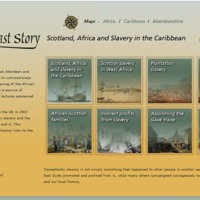
A North East Story: Scotland, Africa and Slavery in the Caribbean
This online exhibition and learning resource linking the history of transatlantic slavery to North East Scotland was organised by an Aberdeen and Aberdeenshire Bicentenary Committee, including representatives from Aberdeenshire Council, Aberdeen City Council, the University of Aberdeen, the Robert Gordon University and the African and African-Caribbean communities. It followed on from a service of commemoration and a series of public lectures sponsored by the Committee in 2007. The exhibition logo is inspired by the mythical Sankofa bird, a cultural symbol of the Akan-speaking peoples of Ghana in West Africa. Featured here are a number of resources available to download from the North East Story website.
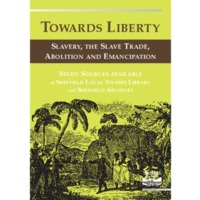
Towards Liberty: Slavery, the Slave Trade, Abolition and Emancipation
This booklet was produced to mark the bicentenary in 2007 and to highlight the material available in Sheffield Local Studies Library and Sheffield Archives for the study of slavery, the slave trade, abolition movements and emancipation. It looks, in particular, at the role of the city of Sheffield and the surrounding areas, and its local residents. Sheffield benefited from the slave system in that goods manufactured in the city's factories were used on the plantations in the West Indies and America. Sugar and coffee produced on the plantations was consumed by residents. There were active anti-slavery groups in Sheffield, including the Ladies Anti-Slavery Society, and petitioning and boycotts were common. Hannah Kilham, a Sheffield Quaker, published a memoir of her experiences in West Africa as a teacher in the 1820s and 1830s.
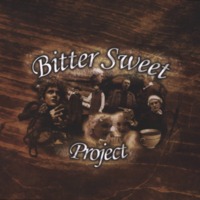
Bitter Sweet Project
Campaign! Make an Impact was a British Library developed programme that used history to inspire young people into active citizenship. The Bitter Sweet Project involved students from Easingwold School engaging with collections from the British Library, Hull Museums Service and Harewood House. Year 9 students studied the 1807 campaign to abolish the transatlantic slave trade and then created a graphic novel about Harewood House’s links to the sugar trade.
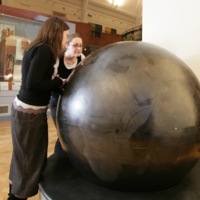
Blue Earth 1807-2007
The sculpture Blue Earth 1807-2007 by African artist Taslim Martin was permanently installed in the newly updated African Worlds Gallery at the Horniman Museum in 2007, to mark the bicentenary. The large iron globe, inscribed with the 18th century image of the slave ship Brookes, traces the routes along which enslaved Africans were transported to the New World, alongside the movement of the products of enslaved labour. The major British ports of Liverpool, London and Bristol are depicted, as well as ports in West Africa and some of the destination ports in North America, the Caribbean and South America. Visitors are encouraged to spin the globe to view slave routes across the world. In 2007-2008, the Horniman Museum also hosted 'La Bouche du Roi' by Romuald Hazoumé.
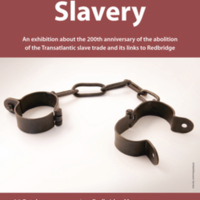
Redbridge and Slavery
Redbridge Museum's exhibition to mark the bicentenary examined the London Borough of Redbridge's connections to the slave trade and abolition. These links included local resident Josiah Child, once Governor of the East India Company, an investor in the Royal African Company and owner of plantations in Jamaica. The Mellish family of Woodford had connections with the West India Docks in London, built for the sugar trade. Alexander Stewart of Woodford owned Jamaican plantations and acted on behalf of owners of enslaved Africans in compensation claims after abolition. The exhibition also examined church records detailing some of the Black residents of Redbridge in the 17th and 18th centuries. Music from the Caribbean island of Dominica was included, as was a series of personal responses to the bicentenary by local residents.
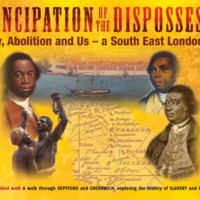
Emancipation of the Dispossessed: Slavery, Abolition and Us - a South East London angle
Emancipation of the Dispossessed was a local community project exploring the local history of Deptford and the surrounding areas and the connections with the transatlantic slave trade. Community groups and students from Lewisham College worked with theatre educators to research and develop 'Blood Sugar', a promenade performance through the Queen's House, Greenwich. The play, written and directed by John Turner, tells the story of slavery and abolition from a local angle, and the script was built around first-hand and eyewitness accounts, campaign pamphlets and reports to parliament. The project also produced learning resources aimed at Key Stage 3 History and Citizenship.
A guided walk explored Deptford’s links to the history of the transatlantic slave trade, uncovering stories of some of the local people who played an important role in the beginnings of the slave trade or the campaign for its abolition. London was an important slave trading port before Bristol and Liverpool dominated the trade. The trade and British colonies were protected by the Royal Navy, whose ships were built and prepared for voyages at the Royal Dockyards at Deptford.
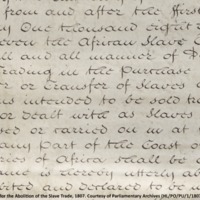
Inhuman Traffic: The Business of the Slave Trade
An exhibition at the British Museum exploring how the transatlantic slave trade functioned. The display examined the commodities involved - tobacco, guns, textiles, sugar, rum - and the ways in which Africa, Europe and the Americas were linked in a global trade network. The exhibition also looked at resistance leaders including Toussaint L'Ouverture, Olaudah Equiano and Nanny of the Maroons, and their struggles to end enslavement. The exhibition was accompanied by a varied public programme at the museum exploring the legacy of the slave trade as part of the Atlantic Trade and Identity season, featuring film screenings, panel discussions, seminars and lectures.
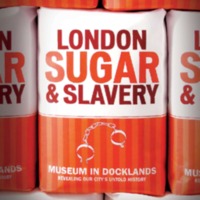
London, Sugar and Slavery
The Museum of London Docklands opened the London, Sugar and Slavery gallery in 2007, and it remains a permanent exhibition. The museum, housed in an old sugar warehouse on London’s West India Dock, retold the narrative of the transatlantic slave trade from the perspective of London, once the fourth largest slaving port in the world. Through personal accounts, film, music, interactive exhibits and over 140 objects, the exhibition looks at the various stages of the transatlantic slave trade, including life and trade on the West India Dock, and conditions for the enslaved on the Middle Passage and the Caribbean plantations. The final section of the gallery focuses on the legacies of the slave trade for British society today. Community collaborations also helped shape the gallery.
The museum also created a walking trail for the local area, highlighting key architectural features and buildings that had a role in the transatlantic slave trade. The Slave Map of London was developed in collaboration with three London museums: the Cuming Museum in Southwark, Bruce Castle Museum in Haringey and Fulham Palace Museum. Users navigated an online map to discover over 100 different locations throughout London which played a part in the transatlantic slave trade and the fight to end it. A schools programme that accompanied the opening of the exhibition included drama performances and workshops. Courses that ran alongside the exhibition in 2007 included ‘Resistance and Achievement: the story of African and Caribbean people in Britain’, in partnership with Middlesex University.
In 2018, the museum reflected on the 10 year anniversary of London, Sugar and Slavery with a workshop to explore the significance of the gallery, with contributions from artists, museum practitioners and emerging artists.

1807 and Tate
The industrialist Sir Henry Tate was the early benefactor of the Tate Collection, rooted in the art of the 18th and 19th centuries. Tate's fortune - much of which was spent on philanthropic initiatives in Britain - was founded on the importation and refining of sugar, a commodity inextricably linked to slave labour in the Caribbean. There were a number of initiatives across the Tate galleries to explore these connections. 'Tracks of Slavery' at Tate Britain displayed a selection of images from the Tate's collections which provided a commentary on the relationship of British society with slavery. Displays at Tate Modern included a selection of new acquisitions linked by their treatment of issues arising from slavery and oppression. Tate Liverpool exhibited paintings by Ellen Gallagher. Special events included Freedom Songs at Tate Britain (workshops to create poetry and music by exploring themes of slavery and freedom) and a discussion at Tate St Ives looking at the links between Cornish maritime traditions, the slave trade and the Caribbean.
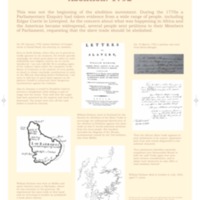
Dumfries and Galloway and the Transatlantic Slave Trade
An exhibition exploring the connections between the Scottish region of Dumfries and Galloway and the transatlantic slave trade toured Dumfries Museum, the Stewartry Museum in Kirkcudbright and Stranraer Museum. At each venue, the exhibition was accompanied by displays of material and a lecture. The catalogue of new research to supplement the exhibition by Frances Wilkins set out to correct misunderstandings about the role of people from the region in the transatlantic slave trade, to prove a history of connections independent of Glasgow or anywhere else. Evidence suggests that men from smaller towns such as Dumfries and Kirkcudbright were involved in the transatlantic slave trade as merchants, slave traders or plantation owners. For example, in the late 18th century, plantation supplies were sent from Kirkcudbright to the island of Grenada; the vessels returned with rum, sugar, and cotton wool.
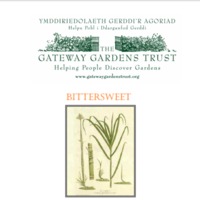
Bittersweet: Sugar, Spice, Tea and Slavery
The Bittersweet programme by the Gateway Gardens Trust involved 80 free guided garden visits over two years, around more than 30 gardens in Wales with a range of community groups, schoolchildren and lifelong learners. The themes of the visits and a mobile exhibition were the links between the slave trade and historic gardens, their makers, what they planted, Welsh abolitionists and the wider links with local communities in Wales. Historic gardens provided the starting point, looking at how everyday vegetables and fruits - beans, potatoes, tomatoes etc. - first reached the UK from the Americas. The project also looked at the history of afternoon tea, and the links between sugar, cotton and tea and slavery. The groups reflected on how many industries, grand houses and gardens were built from wealth linked to slavery, such as Cyfarthfa Ironworks in Merthyr and the expansion of the slate industry at Penrhyn Quarry. Early 18th century-style newspapers were produced, aimed at schoolchildren and adults.
Gardens involved included Cardiff’s Bute Park, Swansea’s Singleton Park, the National Botanic Garden in Carmarthen, Gwydir Castle in Llanrwst, Dyffryn Gardens, Portmeirion, Penrhyn Castle, Picton Castle, Dinefwr Park and Castle and Aberglasney Gardens.
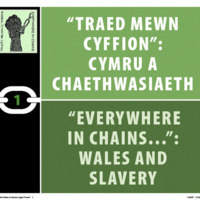
Everywhere in Chains: Wales and Slavery
Everywhere in Chains was an umbrella project created for the bicentenary commemorations in 2007, by a collaboration between Amgueddfa Cymru - National Museum Wales, the National Library of Wales, University of Wales, Bangor and CyMAL: Museum Archives and Libraries Wales (part of the Welsh Assembly Government). An exhibition explored Welsh involvement in slavery, especially focusing on the transatlantic slave trade and its abolition, the Black presence in Wales, and legacies of slavery. This was shown at the National Waterfront Museum in Swansea from May to November 2007 before touring to Wrexham County Borough Museum. The touring version of the exhibition was funded by the Welsh Assembly Government. The exhibition in Wrexham included discussion of the painting 'A Negro Coachboy', thought to commemorate a black servant of John Meller, owner of the Erddig estate in the 18th century.
Alongside the exhibition, the Everywhere in Chains programme also included lectures, formal learning activities and performances. An educational pack was produced by CyMAL and distributed to every school in Wales in 2009-2010. A community project created a forum in which participants from many cultural backgrounds could voice their ideas about enslavement. The Everywhere in Chains Community Heritage Toolkit captured the learning from this project. The toolkit, launched in 2009, was produced to help individuals, groups and organisations to work with culture and heritage providers to undertake projects focused on the role of Wales in the transatlantic slave trade and issues of modern slavery.
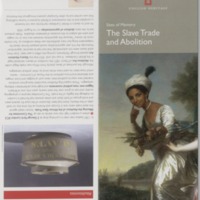
Sites of Memory: The Slave Trade and Abolition
The Sites of Memory project was the first research by English Heritage (now Historic England) to provide an overview for the public of the buildings, memorials and grave sites across England that reflects the role of the slave trade in British history, and resistance to it. The project explored the history of Black people in Britain during the 18th and 19th centuries by exploring the stories behind the historic built environment of local streets, buildings and landmarks. The research (by historians Angelina Osborne and S. I. Martin, on behalf of English Heritage) also identified sites associated with the slave trade and plantation wealth, and with the abolitionists who campaigned for an end to slavery. English Heritage also made recommendations for new listings for historic sites that mark the Black presence.
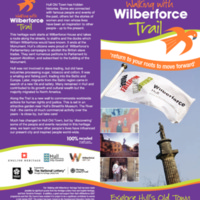
Walking with Wilberforce Heritage Trail
Part of Wilberforce 2007, the Walking with Wilberforce Heritage Trail is a journey through Hull's Old Town, via twelve important landmarks related to William Wilberforce and the theme of freedom. Along the trail is the Humanitarian Wall, at the Wilberforce Institute for the study of Slavery and Emancipation, constructed in 2006 to commemorate worldwide actions for human rights and justice. The ceramic markers, inspired by the Sankofa bird, were designed especially for the trail by three community and art groups from Hull's Africa Forum, from Hull College ceramic students and from local schools working in collaboration with two local ceramic artists. The trail was launched with a celebration of African culture led by students from Hull schools and the local Congolese community.
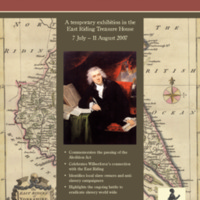
William Wilberforce, Slavery and the East Riding
Alongside commemorating the passing of the 1807 Abolition Act, the ‘William Wilberforce, Slavery and the East Riding’ exhibition at the Treasure House in Beverley also highlighted Wilberforce’s connections with the East Riding of Yorkshire. The exhibition traced the roots of the Wilberforce family back to the early 13th century, and narrated the story of William Wilberforce’s early life in a family of merchants, and later, his significant contributions to the abolition campaign. It also looked at the other links between the East Riding and slavery, in the family fortunes of the Beverley family and Watt family, founded on ownership of slave plantations, but also the anti-slavery societies established in the region. The exhibition ended by highlighting the plight of the millions of people still enslaved across the world today, and discussed some of the contemporary antislavery efforts.
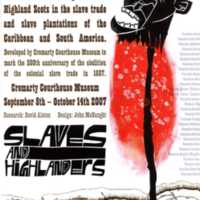
Slaves and Highlanders
An exhibition developed by Cromarty Courthouse Museum in the Scottish Highlands recording the role of Highland Scots in the slave trade and slave plantations of the Caribbean and South America and, in particular, British Guiana. The striking illustrations were by John McNaught. The exhibition told individual stories of Scottish merchants, plantation owners and their slaves, such as a slave called Inverness, bought, sold, exploited and hunted as a runaway by Scots in Demerara. It also looked at the freed slaves who found a place in Scottish society. Connected to this project was the placing of a plaque in the former Royal Northern Infirmary (now the executive office of the University of the Highlands and Islands). It remains one of the few acknowledgements of the use of profits from the slave plantations to fund charitable public institutions, and the only known one in Gaelic.